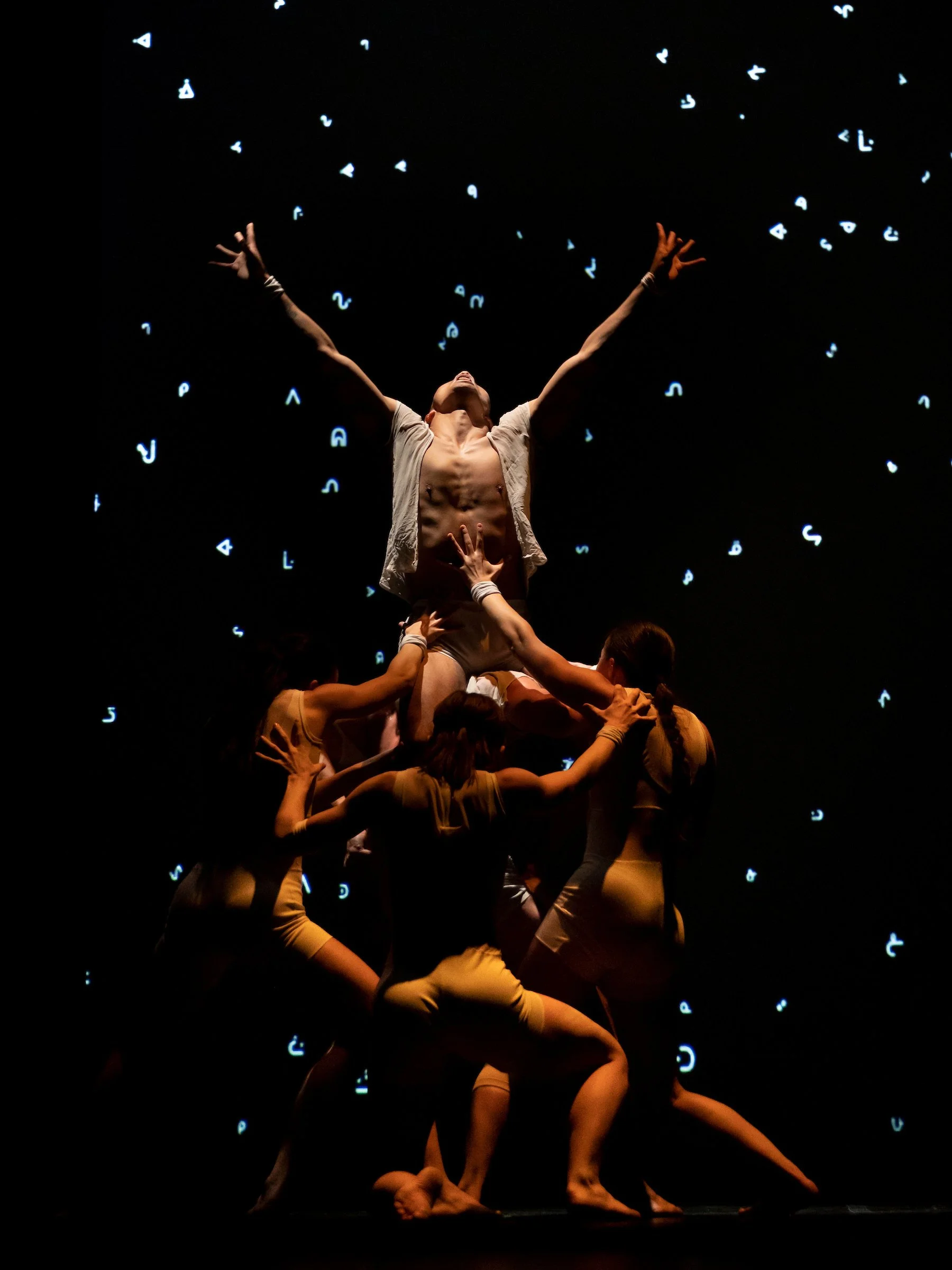Dance review: Red Sky Performance's Trace evokes a cosmos and a culture
The fiercely athletic full-length work revolves around Anishinaabe creation stories
Trace by Red Sky Performance. Photo by Marc J. Chalifoux
DanceHouse, SFU Woodward's Cultural Programs, and Full Circle First Nations Performance present Trace by Red Sky Performance at the Goldcorp Centre for the Arts to November 27
OF THE MANY stunning scenes in Red Sky Performance’s Trace, there’s one in particular that hits you as hard in the heart as the gut. Projected on a floor-to-ceiling black screen at the back of the stage is white text from a 1921 letter from the Department of Indian Affairs to agents that reads in part: “It is observed with alarm that the holding of dances by the Indians on their reserves is on the increase….I have, therefore, to direct you to use your utmost endeavours to dissuade the Indians from excessive indulgence in the practice of dancing. You should suppress any dances which cause waste of time….” In front of the screen is a cluster of dancers clad in body-hugging white shirts and shorts, five of them lifting up another, evoking a phoenix rising from the ashes, as individual letters from that directive start to tumble one by one like so many falling stars. It’s all set to composer Eliot Britton’s percussive-driven score that layers recorded sounds with a live performance by a trio of musicians at stage left and that includes breath and throat singing by vocalist Nadene Rasmussen.
The vignette potently encapsulates artistic director and visionary Sandra Laronde’s Toronto-based Indigenous performing-arts company’s full-length work, choreographed by Jera Wolf. It’s one that speaks not only to the cosmos from an Indigenous perspective but also to the resilience of Indigenous people and to the resonance, beauty, and depth of Indigenous culture.
At times Trace has a dreamy feel, with twinkly sounds and delicate gestures, the dancers slowly peeling away from each other like petals on a time-lapse shot of a blooming flower; at others, it’s electric, as when four performers wind up face-down on the floor then bolt their bodies straight up off the ground, the score building to a pummeling intensity.
The tempo may shift but the musical and choreographic through line is a driving primal rhythm, creating a sense of innate connection that transcends time. Throughout the 55-minute piece, visuals range from tiny sparks of a fire flying up to the night sky—as seen from underneath—to entire galaxies, including what some call the Milky Way but what the Anishinaabe refer to as the River of Souls. According to their ancestral origin stories, people travel along that pathway to and from their time on Earth.
Fiercely athletic, tightly executed, and deeply moving, Trace is an otherworldly experience that brought Vancouver audiences to their feet on opening night. The first performance at Goldcorp Centre for the Arts in 21 months, the show opened with a traditional welcome by Willie Lewis of the Squamish Nation and was dedicated to Lee Maracle, the recently deceased beloved local Indigenous poet and activist. After seeing Trace, you can’t help but wonder if she was looking down from way up high, dancing with the stars.













